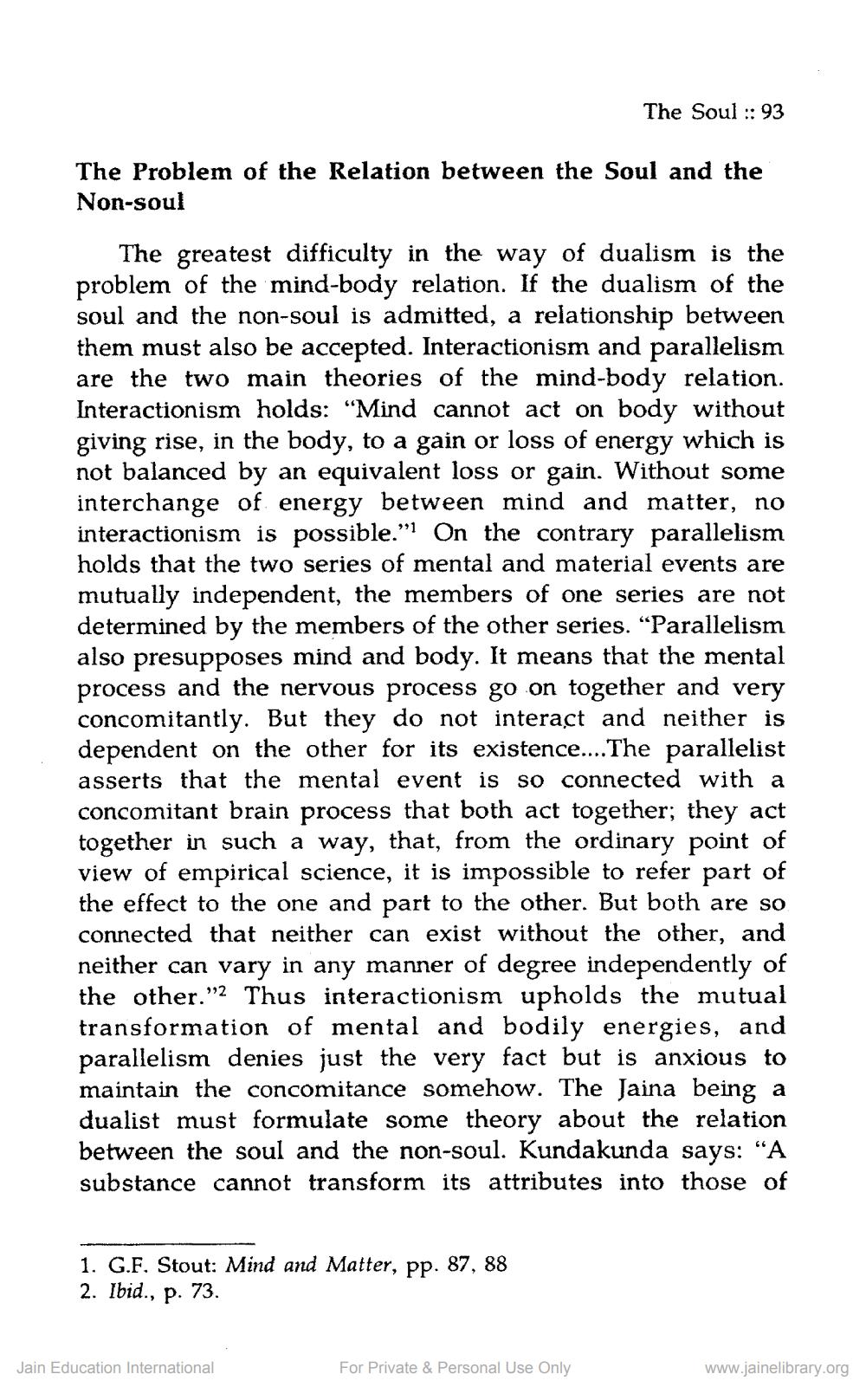________________
The Soul :: 93
The Problem of the Relation between the Soul and the Non-soul
The greatest difficulty in the way of dualism is the problem of the mind-body relation. If the dualism of the soul and the non-soul is admitted, a relationship between them must also be accepted. Interactionism and parallelism are the two main theories of the mind-body relation. Interactionism holds: "Mind cannot act on body without giving rise, in the body, to a gain or loss of energy which is not balanced by an equivalent loss or gain. Without some interchange of energy between mind and matter, no interactionism is possible.” On the contrary parallelism holds that the two series of mental and material events are mutually independent, the members of one series are not determined by the members of the other series. “Parallelism also presupposes mind and body. It means that the mental process and the nervous process go on together and very concomitantly. But they do not interact and neither is dependent on the other for its existence.... The parallelist asserts that the mental event is so connected with a concomitant brain process that both act together; they act together in such a way, that, from the ordinary point of view of empirical science, it is impossible to refer part of the effect to the one and part to the other. But both are so connected that neither can exist without the other, and neither can vary in any manner of degree independently of the other."2 Thus interactionism upholds the mutual transformation of mental and bodily energies, and parallelism denies just the very fact but is anxious to maintain the concomitance somehow. The Jaina being a dualist must formulate some theory about the relation between the soul and the non-soul. Kundakunda says: “A substance cannot transform its attributes into those of
1. G.F. Stout: Mind and Matter, pp. 87, 88 2. Ibid., p. 73.
Jain Education International
For Private & Personal Use Only
www.jainelibrary.org




